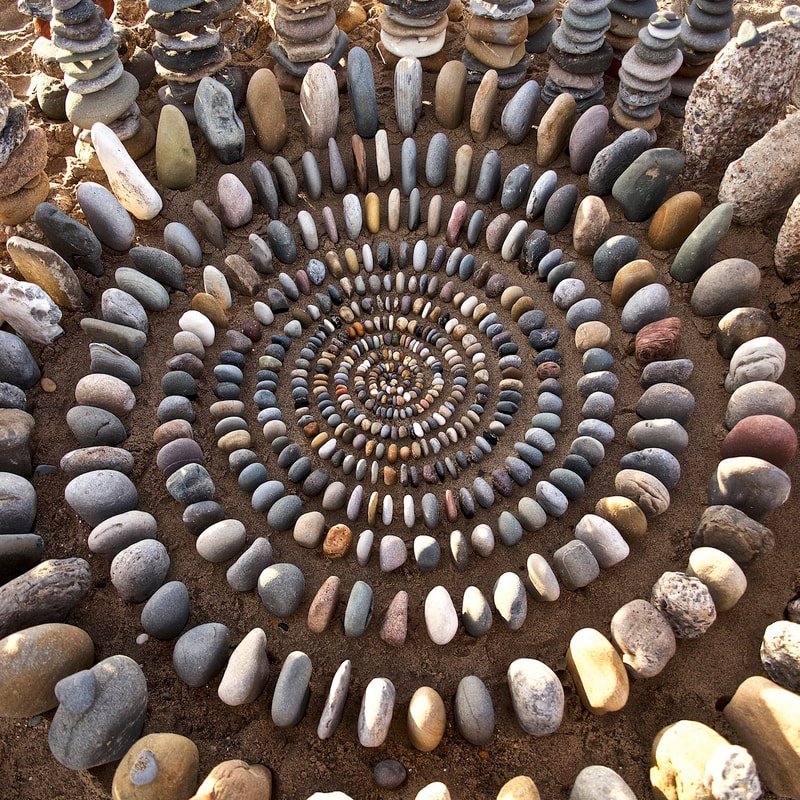

Incorporating his love of photography, Goldsworthy documented the works he created through photographing them. Some of the objects included using stones, rocks, sticks, leaves, branches, snow, ice, and any other natural materials that were accessible to him at the time. Throughout the 1980s, Goldsworthy became affiliated with the Environmental Art movement alongside artists Chris Drury and Richard Long, as his artworks were created outside in nature using only natural elements and found objects that were sourced at the site. Goldsworthy described his gradual move northwards as something that was essentially out of his control, as he felt driven by both economic opportunities and the desire to work in these areas.

It was there that he began to produce works that were inspired by the great Robert Smithson, as well as other influential land artists who created work during the 1960s and 1970s. Here, Goldsworthy would create temporary structures that would be destroyed when the tide came in.Īfter his studies, he stayed in Langholm in Dumfries and Galloway before moving to Scotland in 1985. Thus, some of Goldsworthy’s earliest works were rock sculptures that were created at Morecambe Bay, a beach close to his art school. It was during his studies that Goldsworthy discovered his desire to create art outside in nature as opposed to being confined to a studio. Following this, he attended the now-called University of Central Lancashire from 1975 until 1978, which is where he graduated from and received his Bachelor of Arts degree.ĭuring his studies, Goldsworthy familiarized himself with the work of fellow British artists who followed an environmental philosophy, such as Hamish Fulton and Richard Long. In 1974, Goldsworthy studied fine art at the Bradford College of Art for a year. He has since likened the repetitive nature of the farm work he completed to that of making sculptures, as he describes the routine involved as rhythmic enough to get completely absorbed into it. This experience of working in nature enabled him to develop an acute awareness and understanding of his surroundings, as well as an appreciation for the fleeting characteristics of different landscapes. His family introduced him to agriculture when he was very young, which began to stimulate his great interest in nature, as well as the changing of the seasons. Photograph of Andy Goldsworthy in 2005 while working on his de Young installation Bride of Frankenstein from Williston, VT, United States of America, CC BY 2.0, via Wikimedia Commonsīorn in Cheshire, England, Goldsworthy grew up in West Yorkshire and from about the age of 13, began working as a farm laborer when he was not in school. Goldsworthy lives in Scotland today, where he continues to produce his temporary artworks. Goldsworthy’s works are kept in various collections around the world, including the Courtauld Institute of Art in London, the National Gallery of Art in Washington D.C., and the Storm King Art Center in New York. Within his current artworks, this viewpoint is still evident.

In his earlier works, Goldsworthy expressed an innate knowledge that demonstrated his awareness about the fleeting identity of landscapes and nature and understood that they could not be permanently altered. Andy Goldsworthy artwork is classified as part of the Land Art movement and is said to document the passage of time through their impermanence. 4.4 Five Men, Seventeen Days, Fifteen Boulders, One WallĪndy Goldsworthy (born July 1956) is a British sculptor, photographer, land artist, and environmentalist, who is best known for the transient works that he creates in nature using materials found at the site.4.1.1 What Is the Medium of Andy Goldsworthy’s Japanese Maple Leaves?.4 Andy Goldsworthy Artwork: Most Famous Pieces.


 0 kommentar(er)
0 kommentar(er)
